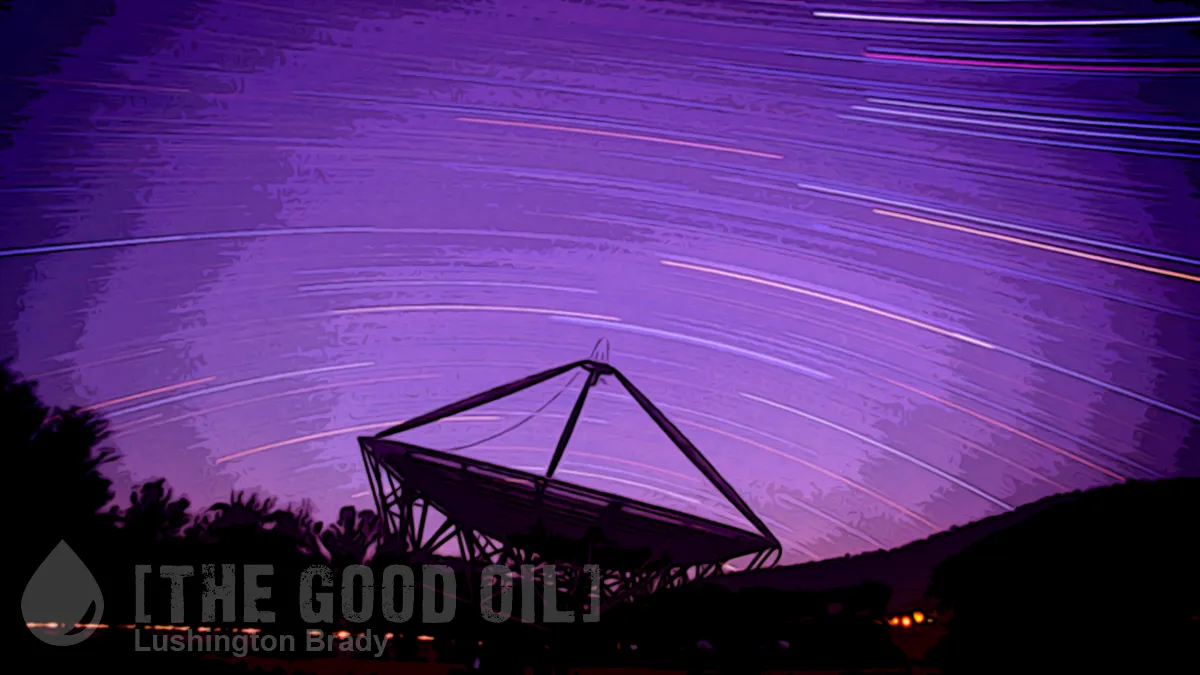For all the decades of wishful thinking about UFOs, the disappointing truth remains: if the Space Brothers are out there, they’re keeping awful quiet about it. ‘UFO’ hope springs eternal, though: breathless claims about ‘proof of alien life’ crop up with as tiresome regularity as stories about how ‘commercial fusion technology is just around the corner!’
One by one, though, the hopes of UFO cultists are dashed on the rocks of pitiless reality. SETI (Search for Extraterrestrial Intelligence) ended with barely a whimper in 2020, and its mainstay, the huge radio telescope dish at Arecibo in Puerto Rico, is a rusting hulk.
Now, one of the longest-standing great white hopes of the SETI types has been dashed.
In the 1950s, Ohio State University built a large observatory to use in its Search for Extraterrestrial Intelligence (SETI), a program designed to search the skies for anomalies that might point to alien life. Known as the Big Ear, the telescope was first turned on in 1963. It was larger than three football fields and had the extreme sensitivity to pick up small sounds from space.
And encountered what physicist Paul Davies has dubbed The Eerie Silence of the observable universe. But the silence was apparently briefly interrupted in the late ’70s.
In 1977, the SETI program made headlines when a volunteer at the observatory, astronomer Jerry Ehman, noticed an unusually strong signal detected on Aug. 15, 1977. The signal lasted just 72 seconds, and was so extraordinary that Ehman circled the data in red and wrote “Wow!” in the margins.
What he had discovered was an unusually powerful narrowband radio signal near the hydrogen line. In the years since, scientists have struggled to determine just what might have caused it.
The fact that the signal was near the hydrogen frequency was particularly seized on by UFO hopefuls. Hydrogen being the most abundant element in the universe, many surmised that any advanced civilisation would seize on it as a kind of universal marker. The famous ‘Golden Discs’ attached to the Voyager spacecraft include a diagram of the hydrogen molecule, as do the plaques on the Pioneer craft. SETI concentrated its resources on listening in on the hydrogen line.
When the ‘Wow!’ signal was logged, it was seized on as just the thing they’d been hoping for.
In recent months, a team of researchers led by astrophysicist Abel Méndez from the University of Puerto Rico at Arecibo has been working to solve the Wow! signal mystery.
The team examined archival data collected by the former Arecibo Observatory in Puerto Rico between 2017 and 2020 and soon observed several signals that bore a remarkable similarity to the Wow! signal – though they were notably weaker.
Is it all radio chatter, like some kind of cosmic CB trucker conversations?
Probably not.
These signals were recorded from interstellar cold hydrogen clouds.
“We report the detection of narrowband signals (10 kHz) near the hydrogen line similar to the Wow! signal, although two-orders of magnitude less intense and in multiple locations,” the researchers wrote. “Despite the similarities, these signals are easily identifiable as due to interstellar clouds of cold hydrogen (HI) in the galaxy. We hypothesize that the Wow! signal was caused by sudden brightening from stimulated emission of the hydrogen line due to a strong transient radiation source, such as a magnetar flare or a soft gamma repeater (SGR).”
All in all, then, a purely natural, though extremely rare, cosmic event.
The researchers believe the Wow! signal could have been caused by a rare event in which a hydrogen cloud is suddenly stimulated by some strong radiation source, like a magnetar – a neutron star with particularly strong magnetic fields. These magnetic fields could excite the hydrogen atoms, causing the interstellar clouds to suddenly brighten.
“That’s rare,” Méndez said. “What’s the chance of a magnetar being right behind one of those clouds, and have strong enough radiation to excite that cloud, and for someone to be looking in that direction at the same time?”
Space being, as The Hitchhiker’s Guide to the Galaxy famously noted, “really big”, even such a rare event has a chance of happening somewhere in the universe fairly frequently. So Méndez and his team are currently conducting further observations to test his theory using the Very Large Telescope in Chile.
If, as seems likely, they find that ‘Wow’s are just a naturally occurring cosmic firecracker, popping off all over the universe, it’s yet another blow to hopes for finding someone else out there.









